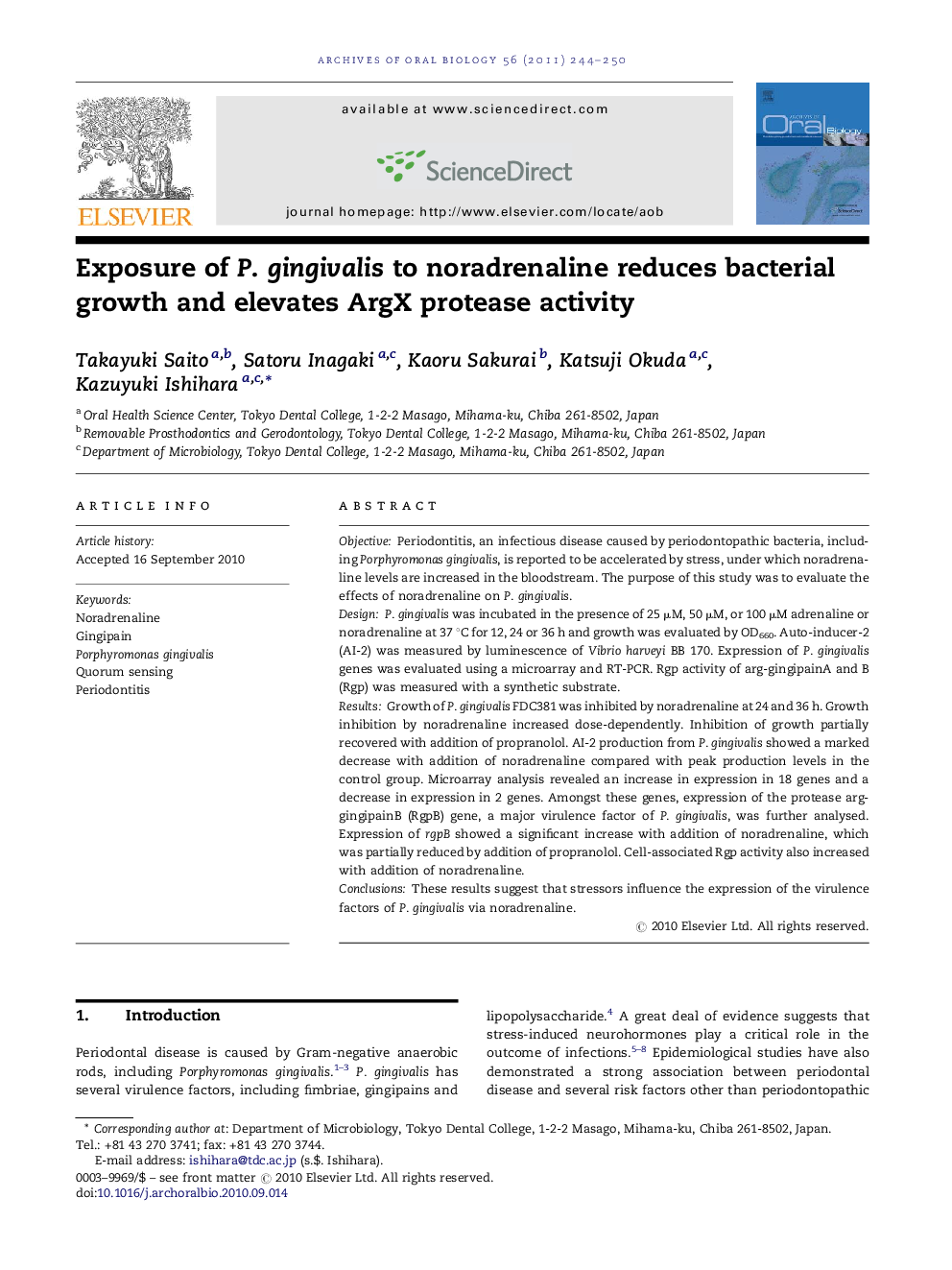| Article ID | Journal | Published Year | Pages | File Type |
|---|---|---|---|---|
| 3121011 | Archives of Oral Biology | 2011 | 7 Pages |
ObjectivePeriodontitis, an infectious disease caused by periodontopathic bacteria, including Porphyromonas gingivalis, is reported to be accelerated by stress, under which noradrenaline levels are increased in the bloodstream. The purpose of this study was to evaluate the effects of noradrenaline on P. gingivalis.DesignP. gingivalis was incubated in the presence of 25 μM, 50 μM, or 100 μM adrenaline or noradrenaline at 37 °C for 12, 24 or 36 h and growth was evaluated by OD660. Auto-inducer-2 (AI-2) was measured by luminescence of Vibrio harveyi BB 170. Expression of P. gingivalis genes was evaluated using a microarray and RT-PCR. Rgp activity of arg-gingipainA and B (Rgp) was measured with a synthetic substrate.ResultsGrowth of P. gingivalis FDC381 was inhibited by noradrenaline at 24 and 36 h. Growth inhibition by noradrenaline increased dose-dependently. Inhibition of growth partially recovered with addition of propranolol. AI-2 production from P. gingivalis showed a marked decrease with addition of noradrenaline compared with peak production levels in the control group. Microarray analysis revealed an increase in expression in 18 genes and a decrease in expression in 2 genes. Amongst these genes, expression of the protease arg-gingipainB (RgpB) gene, a major virulence factor of P. gingivalis, was further analysed. Expression of rgpB showed a significant increase with addition of noradrenaline, which was partially reduced by addition of propranolol. Cell-associated Rgp activity also increased with addition of noradrenaline.ConclusionsThese results suggest that stressors influence the expression of the virulence factors of P. gingivalis via noradrenaline.
